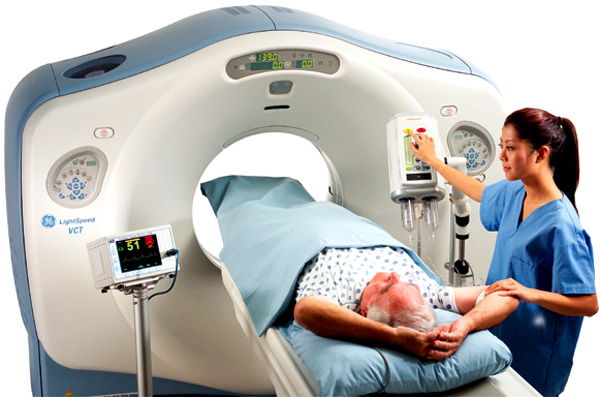Dr Mohammad Ashraf
Cancer is the uncontrolled growth and spread of abnormal cells and can result in death if not targeted in time. Cancer is caused by both external factors like tobacco, infectious organisms, chemicals, and radiation, and internal factors like inherited mutations, hormonal abnormalities, immune conditions, and mutations that occur from metabolism. Cancer is treated with surgery, radiation, chemotherapy, hormone therapy, and biological therapy. However, primary and primordial prevention remains the best tool to curb this menace. Worldwide, cancer is the second leading cause of death after heart ailments but present indices are showing that incidence rates of cancers are on the rise and soon cancer will be the number one cause of death around the globe.
CT Scan uses x-rays to provide rapid, and detailed information about various organs in children. X-rays are an integral component for image formation with CT. There is an obligatory radiation exposure during the CT examination with ionizing radiation, that are described to increase the risk of cancer in individuals exposed to high doses of radiation. So over-exposure to ionizing radiations like use of CT scans can silently kill the persons in particular the children population. A study by Miglioretti DL et al. (JAMA Pediatr. 2013), revealed that the use of CT has doubled for children younger than 5 years of age and tripled for children 5 to 14 years of age, and now there is steep rise in morbidity and mortality due to various cancers associated with use of ionizing radiations. Another study from the National Cancer Institute estimates that CT scans conducted in 2007 will cause a projected 29,000 excess cancer cases and 14,500 excess deaths over the lifetime of those exposed.
Some well controlled and reputed studies have actually shown that those children exposed to CT scans during childhood had increased risk of developing cancer than the general population. A study done by Mathews JD et al. (BMJ. 2013) has shown, that overall cancer incidence was 24% greater for exposed than for unexposed children and it was concluded that this increased risk was after CT scan exposure. A similar study done by Mark S Pearce et al. published in Lancet 2012, has concluded that increased risk of brain tumors and leukemia due to radiation doses from CT scans ought to be kept as low as possible and alternative procedures, which do not involve ionizing radiation, should be considered if appropriate.
Although, early diagnosis by imaging studies can be lifesaving, but there is little evidence of better health outcomes associated with the current high rate of CT scans use, and distressing risks seem outweigh the benefits. A single CT scan exposes a patient to the amount of radiation that epidemiologic evidence shows can be cancer-causing. CT scan are now trending to a routine investigation, and are increasingly being used as a matter of defensive medical practice a dangerous trend that is having far reaching consequences in future .
Reducing the use of CT will certainly reduce the number of deaths from cancer, but will probably also result in missed diagnoses of atypical presentations of various diseases. The individual doctor while managing a patient may feel that although the likelihood of a potentially fatal disease best diagnosed by CT is very small, but poor doctor still want to have a CT because the risk of missing the diagnosis, borne in his mind and weighing the flipside could be potentially huge. A big problem for the doctor is a settlement against the patient if patient is later on otherwise diagnosed. Story will not stop here, there are other colleagues in the same field who will be eager to play and would like to grab this opportunity, with law suits an additional heavyweight threat. Patients who expect perfect diagnosis and treatment are more vulnerable for these type of tests, albeit the fact that outcome with use of these tests is never a promising one.
Health care providers including physicians, technologists, policy makers and administrative authorities should work together to minimize the radiation dose for children to as low as reasonably achievable and encourage responsible use of this essential diagnostic tool. If we want better care probably alternative methods need to employed including proper historical details of the patient and astute clinical examination before embarking on sophisticated investigations. Use of low dose radiation CTs need to be made available with a rule, “image gently and image wisely”. In addition we have to prepare the patients for delayed diagnosis, without necessarily punishing the doctor for masqueraded presentation of the disease. Pediatrician role for the use of computed tomography on children should include discussing the benefits as well as the risks with patients and families in consultation with the radiologists.
(The author is Lecturer Pediatric Nephrology GB Pant Hospital, Govt Medical College Srinagar)
Trending Now
E-Paper


